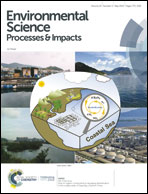Isocyanic acid (HNCO) and its fate in the atmosphere: a review
Abstract
Isocyanic acid (HNCO) has recently been identified in ambient air at potentially concerning concentrations for human health. Since its first atmospheric detection, significant progress has been made in understanding its sources and sinks. The chemistry of HNCO is governed by its partitioning between the gas and liquid phases, its weak acidity, its high solubility at pH above 5, and its electrophilic chemical behaviour. The online measurement of HNCO in ambient air is possible due to recent advances in mass spectrometry techniques, including chemical ionization mass spectrometry for the detection of weak acids. To date, HNCO has been measured in North America, Europe and South Asia as well as outdoors and indoors, with mixing ratios up to 10s of ppbv. The sources of HNCO include: (1) fossil fuel combustion such as coal, gasoline and diesel, (2) biomass burning such as wildfires and crop residue burning, (3) secondary photochemical production from amines and amides, (4) cigarette smoke, and (5) combustion of materials in the built environment. Then, three losses processes can occur: (1) gas phase photochemistry, (2) heterogenous uptake and hydrolysis, and (3) dry deposition. HNCO lifetimes with respect to photolysis and OH radical oxidation are on the order of months to decades. Consequently, the removal of HNCO from the atmosphere is thought to occur predominantly by dry deposition and by heterogeneous uptake followed by hydrolysis to NH3 and CO2. A back of the envelope calculation reveals that HNCO is an insignificant global source of NH3, contributing only around 1%, but could be important for local environments. Furthermore, HNCO can react due to its electrophilic behaviour with various nucleophilic functionalities, including those present in the human body through a reaction called protein carbamoylation. This protein modification can lead to toxicity, and thus exposure to high concentrations of HNCO can lead to cardiovascular and respiratory diseases, as well as cataracts. In this critical review, we outline our current understanding of the atmospheric fate of HNCO and its potential impacts on outdoor and indoor air quality. We also call attention to the need for toxicology studies linking HNCO exposure to health effects.

- This article is part of the themed collection: Best Papers 2019 – Environmental Science: Processes & Impacts


 Please wait while we load your content...
Please wait while we load your content...